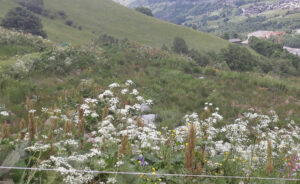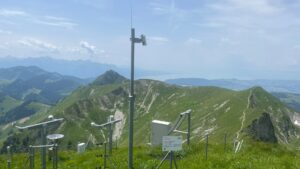Abstract/Description
As climate change accelerates, understanding how climate variability influences post-disturbance recovery is essential. Outside the Alps, warmer and drier conditions often impair recovery. However, in alpine environments, these conditions can act as both stressors and facilitators, necessitating further investigation. While warming may alleviate thermal constraints, increasing climate extremes could hinder recovery in ways that remain poorly understood. To address this gap, our study focuses on two key questions: 1) How does post-disturbance recovery – defined as the percentage of disturbances that recover within 10 years – vary across spatial and environmental gradients in the Alps? 2) What is the impact of post-disturbance atmospheric aridity on recovery success? Specifically, does an increase in vapor pressure deficit (VPD) anomalies hinder or facilitate recovery in temperature-limited but mostly not water-limited alpine systems? Earth observation (EO) data enables large-scale, spatially explicit ecosystem research, essential for sustaining ecosystem services and guiding conservation. However, EO-based assessments face challenges in capturing fine-scale recovery processes, particularly in the Alps, where disturbances are small and heterogeneous. To address these challenges and bridge knowledge gaps on climate-driven recovery patterns, we integrated multi-decadal Sentinel-2, Landsat, and CHELSA climate data into a pan-Alpine data cube, spanning 1986–2023. Using synthetic spectral unmixing, we derived fractional tree cover estimates to generate ecologically meaningful recovery metrics. Recovery was analyzed along environmental gradients, including topography, disturbance characteristics, and post-disturbance meteorological conditions, with a particular focus on VPD anomalies. Our findings reveal substantial spatial variation, with recovery rates within 10 years ranging from 31% to 68%, depending on elevation, disturbance severity, and post-disturbance climate. VPD emerges as a key driver with divergent effects: at high elevations, higher VPD correlates with faster regrowth, whereas in drier, low-elevation regions, it constrains recovery. By identifying key climatic constraints on regeneration and their variability across disturbance and environmental gradients, our study provides a foundation for more targeted post-disturbance interventions.


